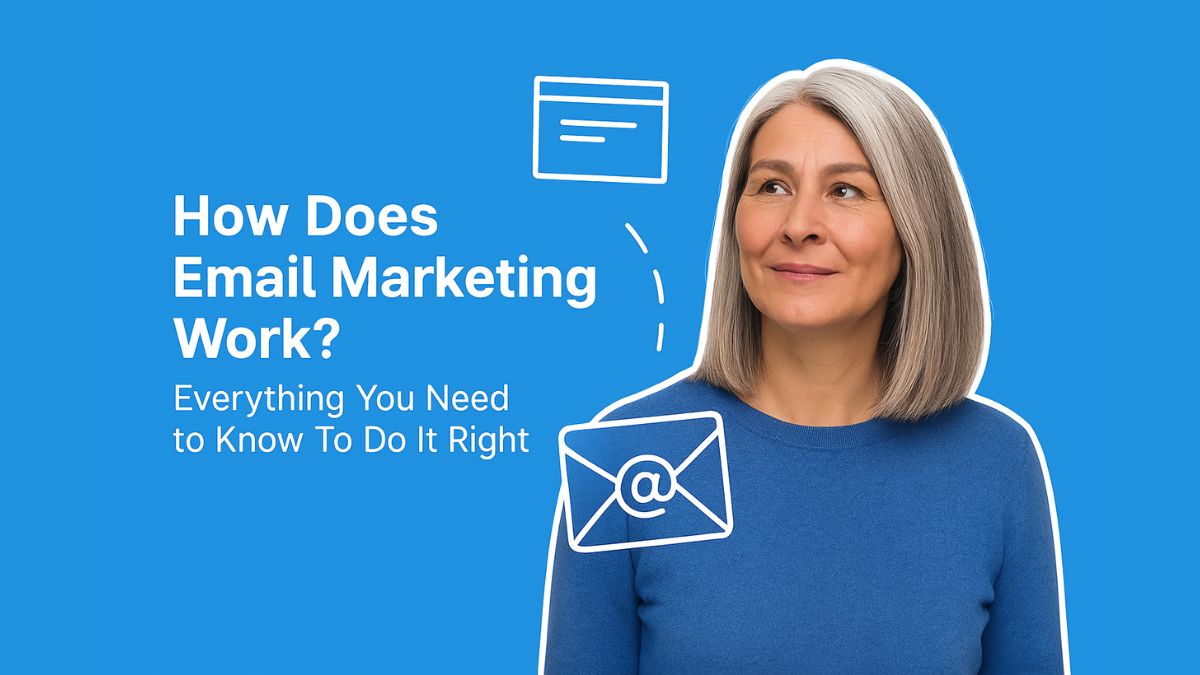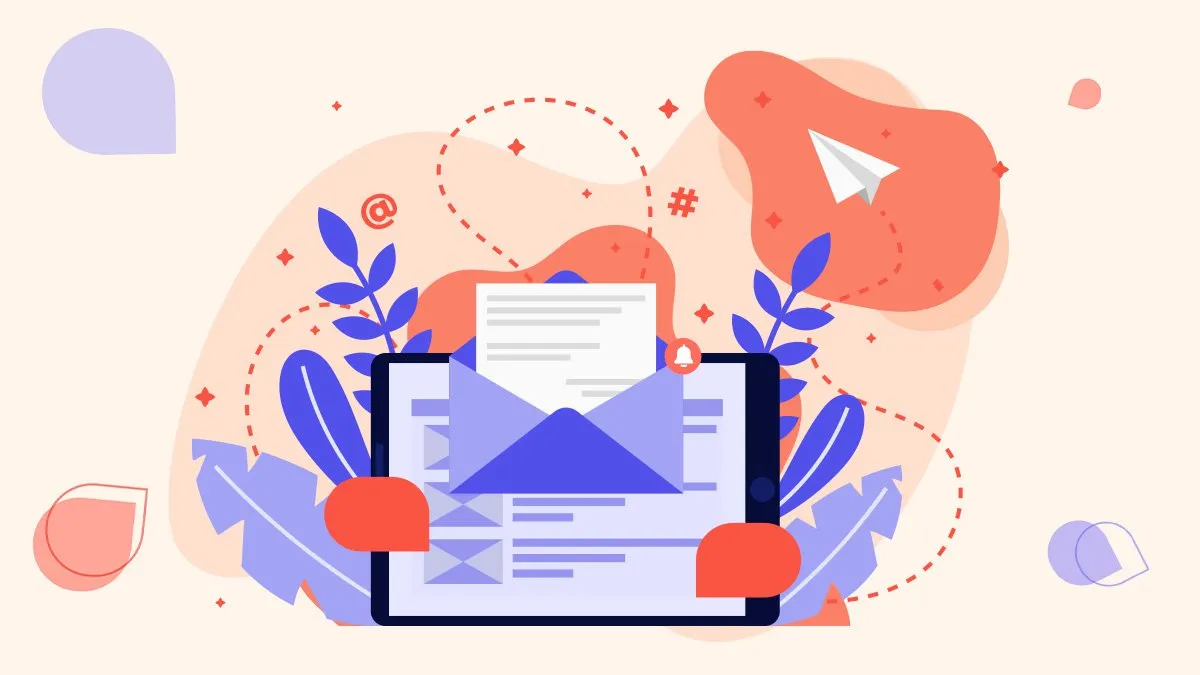Have you ever wondered how businesses manage to send personalized emails to thousands of people without breaking a sweat? The secret lies in email marketing automation.
If you’re new to this concept, don’t worry—you’re in the right place. Imagine having a virtual assistant that works around the clock, reaching out to your subscribers with the right message at the right time, without you having to lift a finger.
Sounds amazing, right? This beginner-friendly guide will unravel the mysteries of email marketing automation and show you how it can revolutionize your approach to reaching your audience. By the end of this article, you’ll see how automation can not only save you time but also enhance your connection with your subscribers, boosting your business in ways you never thought possible. Stick around, and let’s dive into the world of effortless, yet impactful, email marketing.

Credit: blog.aweber.com
Introduction
Email marketing automation makes sending messages easier. It helps businesses communicate with customers without much effort. By setting up automation, emails can be sent based on actions like signing up for a newsletter or making a purchase. This method saves time and ensures messages reach the right people at the right moment.
Automation also allows for personal touches. Messages can be customized to fit each recipient’s needs. This personal approach can make customers feel valued. Businesses can also track how well their emails work. They can see who opened them and who clicked on links.
This information helps improve future messages. Overall, email marketing automation is a useful tool for reaching and engaging with customers efficiently.
What Is Email Marketing Automation?
Email marketing automation makes it easier to send emails without manual effort. It is a process where software tools help send emails automatically based on pre-set rules. For example, when someone signs up for a newsletter, the software can send a welcome email without anyone having to do it.
This saves time and keeps communication consistent. Businesses use automation to stay in touch with customers regularly. It allows them to send personalized messages based on customer actions, like clicking a link or making a purchase. With automation, it’s possible to schedule emails and track how many people open and read them.
This helps businesses understand what their audience likes. Overall, email marketing automation helps businesses send the right message to the right person at the right time, making it a valuable tool for effective communication.
How Automation Differs From Manual Email Campaigns
Manual email campaigns require a lot of time. Each email is sent to a list of contacts, and this is done one by one. It is slow and can be tiring. Automation changes this process. With automation, emails go out automatically based on rules.
This can be a big time saver. For example, a welcome email can be sent to new subscribers without any extra work. Automation also allows for personalization. Emails can include a person’s name or interests. This makes each email feel special.
It’s like having a helper who does the work for you. Mistakes are less likely with automation. Everything can be checked before sending. This makes sure the right message goes to the right person. Automation also helps in tracking results.
You can see who opened the emails and who clicked on links. This helps improve future emails.
Key Components Of An Automated Email System
An automated email system includes several key components that work together. First, the email list is crucial. This is where contacts are stored. Next, the segmentation helps organize these contacts into groups based on interests or behaviors. This ensures emails reach the right audience.
Another important part is the email template. These are pre-designed messages that can be personalized. Automation rules are set up to send emails at specific times or after certain actions. For example, a welcome email might go out when someone signs up.
Tracking and analytics play a role too. They show how well the emails are performing. This information helps improve future campaigns. Lastly, integration with other tools like customer relationship management (CRM) software can enhance the system. All these components work together to make email marketing efficient and effective.
The Role Of Triggers Actions And Conditions
Triggers, actions, and conditions are key parts of email marketing automation. Triggers start a sequence. For example, a user signing up for a newsletter can trigger a welcome email. Actions are what happens next. This could be sending an email, updating a contact list, or adding a tag.
Conditions are rules. They help decide what happens after a trigger. For example, if a user opens an email, a different follow-up message can be sent. Together, these elements create a smooth flow. This helps marketers send the right message at the right time.
This makes email marketing more personal and effective. Understanding these parts makes it easier to set up and manage email campaigns. It saves time and improves communication with customers.
Common Types Of Automated Email Flows
Email marketing automation helps send messages to your audience at the right time. Different automated email flows can be set up. One common type is the welcome series. This is often the first email a subscriber gets. It introduces them to your brand and sets expectations.
Another type is the abandoned cart email. This email reminds customers about items left in their shopping cart. It encourages them to complete the purchase. Then there are post-purchase emails. These are sent after a customer buys something. They can thank the customer and offer more products.
Re-engagement emails aim to win back inactive subscribers. They might include special offers. These flows help businesses stay connected with their audience. They can improve customer relationships and boost sales. Each flow serves a purpose and is part of a larger strategy.
Automated emails make communication easy and efficient.
Benefits Of Using Automation For Beginners
Email marketing automation offers many advantages for beginners. It helps save time by sending emails automatically. This way, you do not have to send each email manually. Automation also helps in organizing your email campaigns better. You can set up a schedule for your emails.
This ensures your messages reach your audience at the best time. Personalization is another benefit. Automated emails can be tailored to fit the interests of each subscriber. This makes your emails more engaging and effective. Tracking the success of your emails becomes easier too.
You can see who opens your emails and clicks on links. This data helps in improving future campaigns. Automation tools are easy to use. They often come with templates and guides. Beginners can start quickly without much hassle. Overall, email marketing automation simplifies the process.
It allows beginners to focus on creating quality content.
Tools That Help You Automate Easily
Many tools make email marketing automation easy for beginners. Mailchimp is a popular choice. It offers simple templates and easy-to-use features. You can schedule emails and track performance. Another tool, Constant Contact, provides user-friendly interfaces. It helps create emails quickly.
For more options, consider using Sendinblue. This tool offers both email and SMS marketing. It is good for small businesses. ActiveCampaign is another tool that combines email marketing with CRM. It helps manage customer interactions. Each of these tools offers tutorials and support.
This is helpful for those new to automation. They make it simple to set up automated workflows. With these tools, automating your email marketing becomes a breeze.
Real-life Example: A Simple Welcome Sequence
Imagine a new subscriber joins an email list. They receive a welcome message. This email thanks them for signing up. It might share a bit about the company. The next email arrives a few days later. It introduces the team or highlights popular products.
The third email could offer a special discount. This sequence builds trust and keeps the subscriber engaged. Each message is automated. It saves time and ensures every new subscriber gets the same experience. Automation allows businesses to focus on creating meaningful content.
Subscribers feel valued and are more likely to stay on the list. They might even share the emails with friends. This simple welcome sequence shows how automation can be effective without being complex.
Final Thoughts — Start Small & Scale Smart
Starting small in email marketing automation can be a smart approach. Begin by focusing on a few key tasks that can be automated. This could be sending welcome emails to new subscribers or reminders about upcoming promotions. As you get comfortable, gradually add more automated processes.
This approach allows you to learn and adapt without feeling overwhelmed. Tracking the performance of each automated task helps in understanding what works best. Some tasks might need tweaking for better results. Scaling smart means expanding your automation efforts based on data and feedback.
Consider using tools that offer analytics and insights to guide your decisions. Remember, automation should enhance your connection with your audience. Always keep your subscribers in mind, ensuring your messages are relevant and timely. By growing your automation efforts carefully, you can build a successful email marketing strategy.

Credit: www.mayple.com
Frequently Asked Questions
How Do I Start Email Marketing As A Beginner?
Begin with selecting a reliable email marketing platform. Build a targeted subscriber list. Create engaging and personalized content. Schedule regular emails and analyze performance metrics to refine your strategy. Always comply with legal requirements like CAN-SPAM Act.
How Does Email Marketing Automation Work?
Email marketing automation uses software to send targeted emails based on user actions or set schedules. It personalizes communication, enhances engagement, and streamlines marketing efforts. Automation tools segment audiences, track behavior, and trigger emails, improving efficiency and conversion rates. It saves time and ensures consistent messaging.
What Is The 80 20 Rule In Email Marketing?
The 80 20 rule in email marketing suggests focusing 80% on providing valuable content and 20% on promotional material. This strategy helps maintain audience engagement and build trust, while still driving sales. Prioritize informative, helpful, and relevant content to enhance subscriber experience and improve conversion rates.
What Are The 4 P’s Of Email Marketing?
The 4 P’s of email marketing are Personalization, Permission, Promotion, and Performance. Personalization tailors content to subscribers. Permission involves obtaining consent. Promotion highlights offers or updates. Performance measures effectiveness through analytics.
Conclusion
Email marketing automation simplifies communication for businesses. Automated systems save time and enhance efficiency. Triggers, actions, and conditions work together seamlessly. Beginners benefit from easy-to-use tools. Start with simple flows, like welcome sequences. With practice, scaling becomes straightforward. Focus on engaging and relevant content.
Building relationships through email can boost success. Embrace automation’s advantages. Keep learning and adapting. Small steps lead to big growth. Automated emails can be your ally. Explore, experiment, and refine your approach. This journey offers valuable insights for your marketing strategy.



Pingback: Aweber Review 2025: Elevate Small Biz Email Marketing - Digital Boat
Pingback: Moosend Review: Unleash Email Automation & AI Magic - Digital Boat